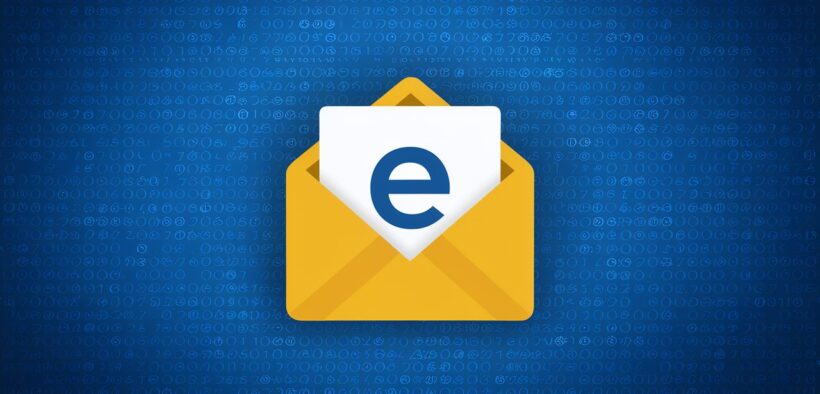How to Identify Phishing Emails Quickly
Share

The proliferation of remote and hybrid work models has exacerbated vulnerabilities in cloud security, making email a prime target for cybercriminals. In 2023, email accounted for a staggering 46% of all threats intercepted by Trend Micro, underscoring the urgency of robust email security measures.
Phishing attacks, a cornerstone of cybercrime, saw a dramatic increase in 2023. Trend Micro blocked over 14 million phishing attacks, representing a 40% surge compared to the previous year. While overall phishing detections dropped by 45% due to a shift in attack methods, the number of credential phishing attempts rose by 17%, reaching nearly 7 million. This indicates a growing focus on stealing sensitive information.
Business Email Compromise (BEC) attacks also remained a significant threat. Trend Micro detected 446,234 BEC incidents in 2023, a 16% increase year-over-year. Cybercriminals increasingly impersonate executives or high-ranking officials, leveraging sophisticated AI tools to enhance the authenticity of their fraudulent communications.
These statistics underscore the evolving nature of email threats and the limitations of standard email security solutions. While Microsoft 365 and Google Workspace offer essential protections, they often prove insufficient against the sophistication of modern attacks. To bolster defenses, organizations must implement additional security layers, such as specialized email and collaboration security platforms, to detect and block advanced threats.
How to Spot Email Phishing with these 5 Tips
Uncovering the hallmarks of phishing emails is crucial in safeguarding yourself from digital deception. By understanding common red flags, you can effectively protect your personal and financial information. This blog delves into five real-world phishing examples to equip you with the knowledge to spot these fraudulent attempts.
1. The Message Is Sent from A Public Email Domain
While some small businesses might use public email domains like Gmail or Yahoo, established organizations generally have their own dedicated email system (e.g., “@companyname.com”). This creates a clear distinction between legitimate and potentially fraudulent emails.
Here’s how to identify a red flag:
- Mismatched Domain and Sender: Check the domain name following the “@” symbol. If it aligns with the sender’s apparent identity (e.g., “@[invalid URL removed]” for an email from Google), the message is more likely genuine. A major warning sign is an email address that doesn’t reflect the sender’s organization.
For instance, an email claiming to be from PayPal but with a “@gmail.com” address is highly suspicious. Phishing attempts often use a sender name like “Account Support” to appear legitimate in your inbox, but the domain itself reveals the truth.
- “Lookalike” Domains: Phishing emails can get more sophisticated by including the organization’s name within the domain itself, such as “[email address removed].” While you might see “PayPal” and assume it’s real, remember:
- The crucial part of the address lies after the “@” symbol. This indicates the actual sender’s organization.
- If the email originates from “@gmail.com” or another public domain, it’s definitely a personal account, not from the real organization.
By being vigilant about unfamiliar domains, you can significantly reduce the risk of falling victim to phishing scams.
2. Beware of Deceptive Domains
Phishing scammers often exploit lookalike domains to trick recipients. They register domain names that closely resemble those of legitimate organizations, hoping viewers will miss subtle variations in spelling or punctuation.
For example, a scammer might register “microsfrtfonline.com” to mimic “Microsoft Online.” These deceptive domains can appear convincing to an untrained eye.
This tactic can become even more elaborate. For example, In a podcast episode, a producer hired an ethical hacker to create a phishing attempt. The hacker purchased the domain “gimletrnedia.com” (with a misspelling of “media”) and used it to impersonate the producer. This phish was so believable that it deceived even high-level company personnel.
The key takeaway here is that even clicking a phishing link, without entering any information, can be valuable to scammers. In this instance, the ethical hacker could track when the link was opened, revealing the target’s curiosity and potential vulnerability, even though they didn’t fall for the full scam.
Cybercriminals often gain valuable insights even from unsuccessful phishing attempts. Hesitation or indecision in recognizing a scam can inadvertently provide clues about an organization’s vulnerabilities. This information can be leveraged to refine future attacks, making them more targeted and effective.
Remember, a single successful phishing attack can compromise an entire organization. To mitigate risks, it is imperative that every employee develops a keen ability to identify phishing attempts promptly. A collective commitment to cybersecurity is essential in safeguarding sensitive information and preventing financial loss.
3. The Email is Poorly Written
Phishing emails often exhibit poor grammar and spelling. Contrary to popular belief, this is not a deliberate tactic to filter out discerning recipients. Instead, it’s often a consequence of the scammers’ limited language proficiency. Many originate from non-English-speaking countries and rely on translation tools, resulting in awkward phrasing and grammatical errors.
While not every grammatical mistake signifies a scam, it’s a significant red flag. Look for unnatural sentence structures, incorrect verb tenses, spelling errors, and inconsistencies in language style.
Remember, legitimate organizations typically maintain high language standards. If an email claiming to be from a reputable company contains numerous grammatical errors, it’s highly suspicious.
Always cross-reference the sender’s identity through trusted channels before taking any action. By being vigilant about these indicators and adopting a cautious approach, you can significantly reduce your risk of falling victim to phishing attacks.
4. Beware of Malicious Payloads
Phishing scams extend beyond emails, infiltrating our digital lives through text messages, phone calls, and even social media posts. Regardless of the delivery method, they all share a common goal: delivering a malicious payload. These payloads come in two main forms: infected attachments and deceptive links.
- Deceptive Attachments
These seemingly harmless files, often disguised as invoices, documents, or forms, harbor malware designed to wreak havoc on your device. The email content might be crafted to make the attachment appear relevant, regardless of whether you were expecting it. However, opening it unleashes malware capable of various malicious activities, including stealing sensitive data.
Here’s how to stay safe:
- Never open attachments from unknown senders. Scrutinize the email address and sender name for any inconsistencies.
- Exercise caution with unexpected attachments, even from familiar contacts. Verify their legitimacy with the sender through a trusted communication channel (phone call, verified email) before opening them.
- Be wary of unusual file types. If you receive an attachment with a file extension you wouldn’t normally expect (e.g., “.exe” for an invoice), raise a red flag.
- Heed security warnings. Pop-up notifications about the file’s legitimacy or requests to adjust security settings are strong indicators of a potential threat.
- Verify with the sender. If you’re unsure about an attachment, reach out to the sender through a trusted method to confirm its authenticity.
- Suspicious Links
Phishing emails often contain links disguised to appear legitimate. Clicking them redirects you to malicious websites designed to steal your personal information. Here’s how to identify these deceptive links:
- Check the destination address. A legitimate link’s destination should match the email’s context. A link from Netflix should lead to an address starting with “netflix.com,” not something entirely different.
- Beware of hidden links in buttons. Scammers often cloak the true destination address within buttons urging action, like “Update Account Now.” This tactic gives the email a sense of legitimacy.
- Train yourself to hover. On a computer, hovering your mouse over the link reveals the destination address in a small bar at the bottom of your browser. On mobile devices, holding down on the link displays a pop-up with the destination.
5. The Urgency Factor a Phishing Staple
Scammers often exploit our tendency to procrastinate. By creating a sense of urgency, they pressure recipients into hasty decisions, reducing the likelihood of critical thinking. Whether it’s a seemingly urgent issue with a financial account or a time-sensitive request from a supervisor, the goal is to provoke immediate action.
Phishing emails frequently employ phrases like “immediate action required,” “account suspended,” or “limited-time offer” to instill a sense of panic. This urgency can override our natural skepticism, making us more likely to click on suspicious links or download attachments without careful consideration.
Workplace phishing scams often capitalize on the hierarchical structure of organizations. By impersonating superiors or IT support, scammers can create a sense of urgency that coerces employees into complying with fraudulent requests. This can be particularly dangerous as employees may hesitate to question a perceived authority figure.
To counteract the urgency-inducing tactics employed by scammers, it’s crucial to pause and assess any unexpected or time-sensitive demands calmly. Verifying the sender’s identity through a trusted channel is essential for confirming the legitimacy of the request. Resisting pressure to act immediately and prioritizing careful consideration is paramount. Regular cybersecurity training empowers employees to recognize and counteract these pressure tactics, fostering a culture of vigilance and safeguarding against phishing attacks.
To sum Up
Email phishing remains a persistent and dangerous adversary. By understanding the tactics employed by scammers, including the use of deceptive email domains, poorly written content, malicious attachments, and manufactured urgency, individuals and organizations can significantly enhance their defenses. Vigilance, skepticism, and ongoing education are essential components of a robust cybersecurity strategy. Remember, a single click can have far-reaching consequences. By adopting a proactive approach and staying informed about the latest phishing trends, you can protect yourself and your organization from falling victim to these attacks.











I got what you intend, thankyou for putting up.Woh I am delighted to find this website through google.
Merely a smiling visitant here to share the love (:, btw great pattern.
Its great as your other blog posts : D, appreciate it for posting. “For peace of mind, we need to resign as general manager of the universe.” by Larry Eisenberg.